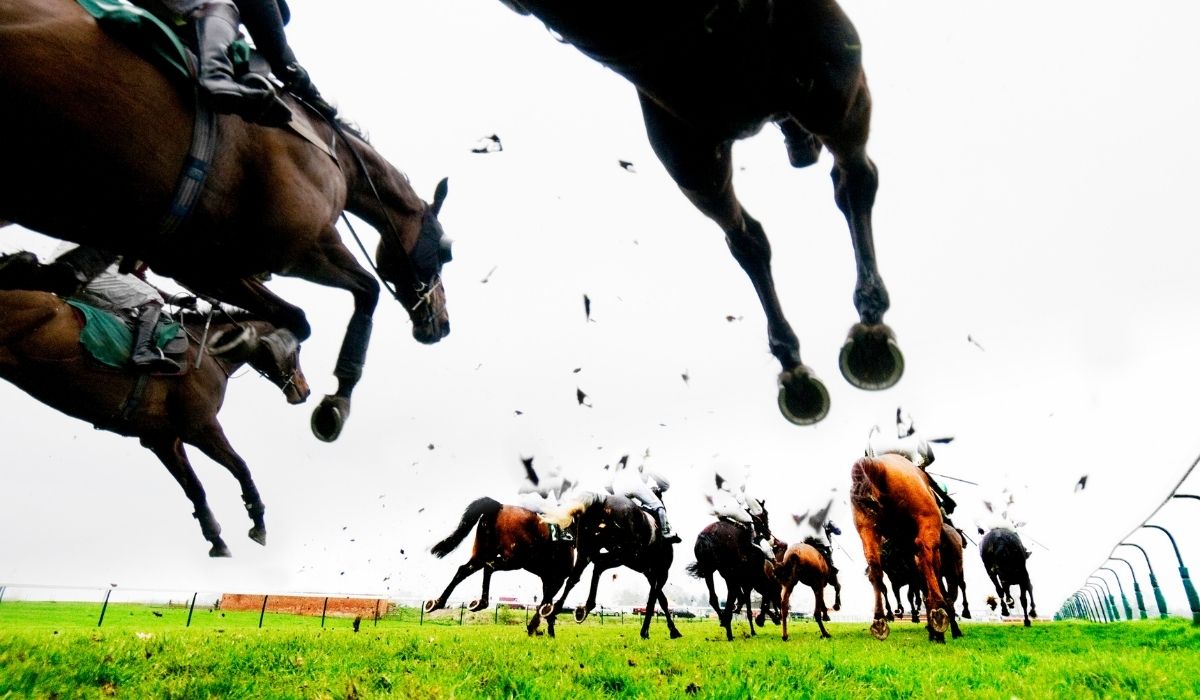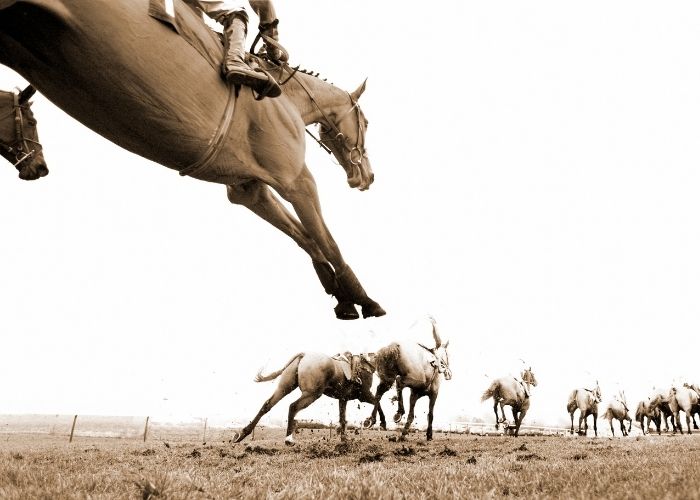Many professional show jumpers had to deal with their horses rushing to jumps and try to correct this with jumping exercises for horses that rush. As common as this can be it’s preferable to a horse that needs to be pushed to jump. It can usually be challenging to hold a horse steady while it’s rushing.
More complicated courses with alternating jump heights are where this can become harder. Constantly having to course correct the speed of the horse will make it difficult to achieve the right amount of strides. This also reduces the amount of time to make turns.
Jumping Exercises For Horses That Rush
Amping up speed before a jump makes it more difficult for the rider to achieve a proper pace to the fence. Frustratingly, this makes the rider ask why do horses rush at jumps?
Curiously, in trying to control the horse, he may simply rush even more as a result of the interference. This mostly happens because the horse might assume it needs more speed and the rider is not providing enough push.
Establishing A Better Rhythm
In trying to answer the question of how do I stop my horse from rushing over jumps, it’s important to understand the value of rhythm. Maintaining a steady canter is something that will prove useful in the long run.
Encouraging the horse to accept the rider’s leg is the first step to take. Once the horse has accepted this guidance, then the rider will have better control over the canter’s rhythm. Training in school with counter canter loops is the best way to begin correcting this issue.
Beginning with a 17 feet loop, try to guide the horse in the rhythm needed. After this is successful, the loop depth can be increased. Attempting to sustain this counter canter requires quite a strong grip with the inside leg without pushing for acceleration.
This is a simple technique to try in the beginning so that the horse will start to understand what the rider wants. In this case, it is to keep a steady canter without the added excitement of a jump.
Basic Grid
Going back to basics in school is how the horse will become more confident and establish a better understanding. Setting up a basic grid is the next step, and this will change over the course of the training.
A basic grid is set with placing poles in a short one stride distance, usually around 3 or 4 one after another. The distance the poles are placed is around 8 feet. Get the horse to comfortably trot or canter over the poles on the ground, as calmly as possible.
Once this can be done without any rushing, then one of the poles can be slightly raised. Either the last or middle pole is raised before trying again. Trotting over the slightly raised pole a few times and slowly transitioning to a walk. Altering between trot and canter to walking helps manage the horse’s speed and reduces rushing.
After this, raising the difficulty level with the placing poles begins. This will consist of making a cross pole in between regular placing poles. What these two lowered poles that sandwich the cross pole do, is encourage the horse to slow down. The last pole especially does this after a higher jump. Shorter distances also help with speed reduction.
There are situations where the horse will jump flat. This brings up the question: how do I get my horse to jump rounder? A cross pole can help with this, as it makes the jump look narrower. The horse will course-correct by sitting his weight back and pulling the knees backward for a rounder jump.
Jumping On A Circle
These jumping exercises for horses that rush sound simple in theory, but they can be difficult in practice. Firstly setting the poles in a circle is required, at a minimum of 60 to 65 feet in diameter. A larger circle like this helps relieve pressure from the horse of having to canter a small circle and jump.
The fence poles should be placed opposite one another around the circle so that the jumps are evenly spaced out. Having the poles a little elevated will make the horse jump over them easier while maintaining a steady canter.
Jumping on a circle is great for establishing a consistent pattern or cantering and jumping. Repetition is key, and with this setup, the exercise provides this repetition and opportunity to develop canter rhythm with jumps.
The rider also greatly benefits from this exercise. The rider needs to look at the next fence to feel the rhythm and distance. Counting strides between jumps is a good way to assess if the consistency of the canter is even.
It’s important to achieve around the same number of strides between jumps. Wondering how far apart should jumps be; with a 65 feet circle like this; ideally it’s 5 strides between jumps.
This exercise is a tiring one for the horse, and if it does not work, do not continue. Stop for a breather, giving the horse a chance to recover and start again from a different angle.
Conclusions – Jumping Exercises For Horses That Rush
Many jumping exercises for horses that rush are about repetition. They are designed to relax more anxious horses and make them think a little more before trying to rush. Such exercises also have the rider in mind, as a way to build up better trust with the horse and watch for the fence.
How do I stop my horse from rushing over jumps?
Going back to some basics is the best advice to follow if a horse frequently rushes over jumps. There are any number of exercises to implement, from jumping over a simple pole grid to jumping on a circle.
Why do horses rush at jumps?
There is usually a miscommunication happening between horse and rider that makes the horse rush over jumps. Usually, the rider tries to slow the horse down but the horse feels unsure and rushes instead.
How far apart should jumps be?
Depending on the layout of the placing poles, along with the rhythm of the canter, jumps need to be somewhat symmetrical. For example, jumping on a circle with a diameter of 60 to 65 feet, 5 strides is how far apart the jumps should be.
How do I get my horse to jump rounder?
In cases where a horse jumps flat, there needs to be some modification on the poles to encourage a rounder jump. Having a cross pole will create a narrower jump in the horse’s mind and so incentify him to shift its weight on the back legs and pull the knees more creating a rounder jump.
Find more information about The Best Horse Magazines For Young Riders

